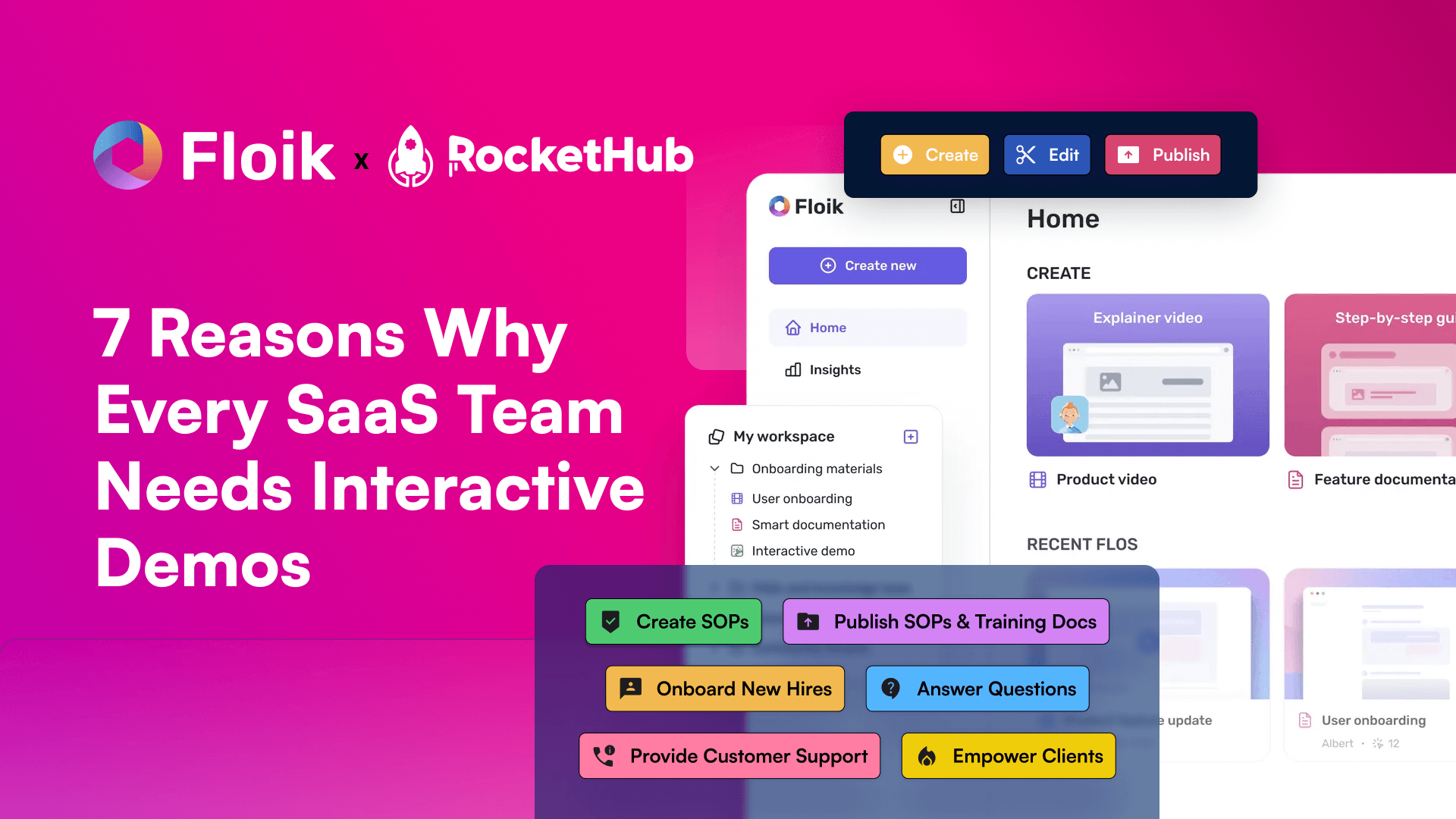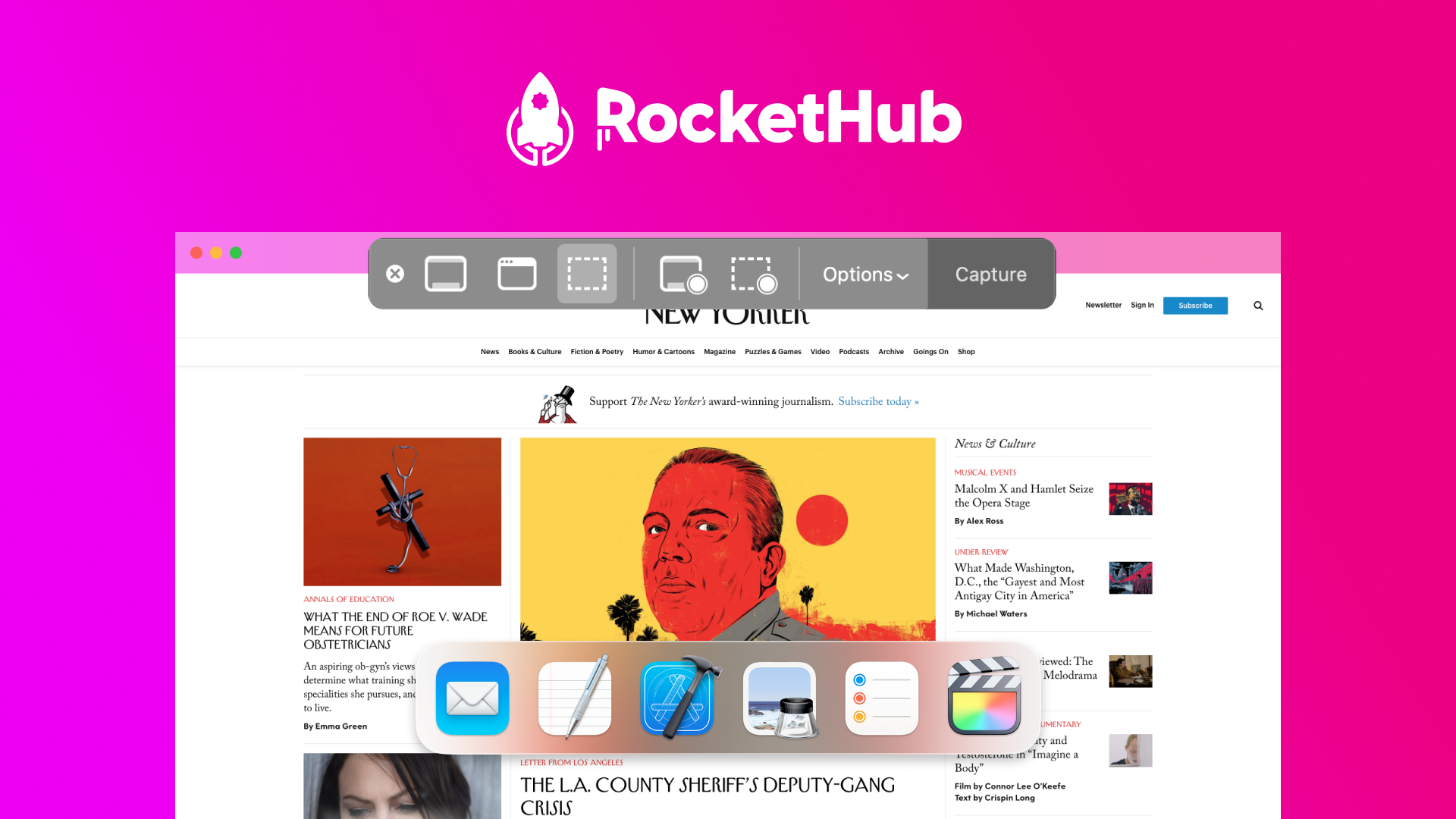
A Must-Know List of 15 UX Tools and Methods for SaaS Founders
- RocketHub Team
- November 9, 2021

One of the primaries focuses for the success of a SaaS product in the market is the user experience. Leading software companies and businesses are actively carrying out different testing methods and tools to amplify the user experience for their customers. Hence, Be it a seasonal SaaS owner or a new entrepreneur. If you want your SaaS product to do well in the market and have more conversions, you need to start user experience testing regularly, preferably even before the launch of the product.
As a SaaS business owner, if your target customers do not like your product within the first few seconds or have a tough time navigating and using the products, they will be gone forever. Over time, this can result in losing out on countless potential sales and profits for the business.
Let’s discover 15 UX methods and tools that every SaaS founder should use for their businesses to check the user experience level of their products. These tools and methods work great into deeply understanding the product and improving the customer experience for the business. Thus, without any further ado, let’s dive right into it.
What is User Experience Testing?
User experience testing is simply a process of testing different aspects of user experiences to identify the best way for a product or the website and its elements to interact with the audience. Here you compile multiple data together and analyze the patterns to find the relevant results.
It focuses on determining the aspects that attract the most audience and any potential turn downs for the audiences that hinder their user experience with the product or website.
Why is UX Important?
One of the common goals of running a SaaS website is to gain more sales. The best way to find out the high-performing sources of sales is to identify what compels your customers to eventually purchase your products or services and what are the requirements to fulfill the customer’s needs to bring them to complete the checkout process.
A user experience test helps to test your hypothesis and gives insights to such points, which can help segregate and filter out the low-performing aspects that decline the customer’s user experience.
Some of the points considered during user experience testing are:
- Social proof
- Trust symbols
- Clear navigation
- Easy checkout process
- Easy access to the product information on the website
10 User Experience Testing Methods to Improve Your Website UX
User experience testing is backed up by different scientific proofs and methods. Here you identify a question or goal, generate a possible hypothesis, set up the complete experiment, and monitor the results. There are multiple methods and tools that help in this complete process of user experience testing. Let’s get into further details.
#1 – Moderated User Testing
Here someone moderates the testing experience of the entire setup and answers questions from participants to guide them throughout the entire process and provide insights on the goals of the website.
The moderator here could be anyone in a room with participants or a discussion group. This mode of testing is useful to explain how your SaaS product or interface works. The moderator will then report the feedback and the experience during the test. After the complete explanation, if confusion still exists, there is possibly an issue with the user experience model.
#2 – Unmoderated User Testing
The process of unmoderated testing is very much similar to moderated testing but with no moderation. Here the participants can share their insights without any moderation from the moderator. However, this brings opportunities for user error or unfocused participant behavior. This is precisely why SaaS businesses should focus on both moderated and unmoderated testing to get unbiased and accurate results.
#3 – Card Sorting
Often the user experience of customers gets hampered due to cluttered, unorganized, or inefficient websites. In such cases, Card Sorting should be your idea test since it helps determine how your website should be organized to achieve the best user experience.
Suppose you have a pack of cards, and each card has different sets of information on the backside, such as product descriptions, support pages, informational content, etc.
Next, you ask the customers or audiences to categorize it as per their interests into rows and columns. The rows represent the importance, and the columns represent the page categories. This way, you can find the ideal organizational structure for your website, which is developed based on your customer’s needs and interests.
#4 – Voice of Customer
Customer feedback is the most priceless possession for a company that can make or break the business. However, customers nowadays do not prefer leaving feedback. You may find 5% of your customers voicing their opinions about the flaws in your website, while the rest 95% will suffer in silence and abandon your website.
Learning to encourage customers to leave feedback about their experience and listening to their feedback in a constructive manner can make an incredible difference to your business.
You may find feedbacks and reviews of your customers in the form of:
- Emails and phone calls
- Feedback forms
- Reviews on third party websites
- Product or service reviews on your website
Analyzing the feedback closely and implementing the changes into our website as per their feedback can drastically improve your customers’ overall user experience. It will also make your potential customers feel valued since it represents how much you care about their views and opinions, resulting in building better brand credibility.
#5 – Asking Users
Often businesses spend days waiting for customers to contact them and talk about their experiences. If you are one of them, too, it’s time to take the lead. If you do not nudge them about their feedback, they are likely never going to talk about their experience with your website.
Set up and share polls and surveys to ask your audiences about their experiences directly. You can set it up on different pages of your website such as blog, homepage, etc. However, social media platforms like Facebook, Linked In, and Instagram are the best places to set up such polls and attract maximum responses.
#6 – Progressive Disclosure
Progressive disclosure is a process whereby businesses avoid disclosing the advanced or rarely used features to the secondary menu, making the application or product easier to learn and navigate. Often customers tend to get overwhelmed with multiple features, and this can degrade their overall user experience. The goal of progressive disclosure is to reduce such instances and streamline the user experience for the customers.
People prefer simplicity and not going overboard with complex features. By disclosing the information progressively, you only reveal the essentials which will help your customers manage the complexity of the feature-rich product or application. Upon request, you can disclose the other advanced features which make the entire journey convenient for the customer.
For customers who are completely naive to the product, this test can help prioritize only the aspects of the website or product which are useful to them instead of juggling between multiple pages.
Progressive disclosure helps in learnability, efficiency, and reduced error rate in a business.
#7 – Recordings
You can set up recordings throughout the journey if you want to know how users interact and engage with your website and product. This will help you record user interaction sessions with your website or product and identify any points of errors or issues while they continue with their navigation. With recordings, you can also learn more about what works better for your customers and their interests.
#8 – Availability and Accessibility
Whenever you type a URL into your browser, you may have encountered a page like this: Error 404. This is a common problem with accessibility that can easily annoy your customers and drive them away from your website.

Your website may have certain links which are broken, do not take you to the directed page, or incorrect navigation. Regular auditing for the accessibility and usability of these links is essential for a convenient user experience on your website.
#9 – Brand Consistency
The way your brand sounds, appears, and behaves on each page of your website is a highly crucial factor most business owners overlook. It can bring risks of confusion or even wrong navigation for your target audience. They may already have a specific brand image from the landing page, but when they visit the services page to check out the services offered by your brand and get confused, there is no way you can win that conversion! Your brand credibility will be at stake, and this is why you should always keep a regular check on the different aspects of your web pages such as fonts, colors, themes, tone, and much more to maintain consistency across all the web pages.
#10 – A/B testing
Out of all these tests, A/B testing is one of the common testing methods used by business owners worldwide to test different aspects of their products or websites.

Whenever you make changes, you can push two or more versions live to test with your audiences as to which one performs best for them and optimize accordingly.
The Best User Experience Testing Tools
Now that we have covered some user experience testing methods for SaaS, let’s check out some effective tools that will provide accurate data and analytics as per the tests carried with the websites and products of your business.
Optimizely

Optimizely is one of the world’s greatest experimentation platforms that offers multiple tools to run various experiments, analyze them and get accurate results on every test. You can also use the integrations and partners of Optimizely to run the tests even more effectively and gain deeper insights into the tests. It is also a great tool to test the personalization of the products and websites of businesses.
GTmetrix
Your website speed can be one of the ultimate determining factors for your business. A slow website can easily drive away potential customers since nobody likes to spend anywhere more than 15-20 seconds just to get a web page loaded, considering the short attention span most of us have. Your potential customers can easily get annoyed with a slow website and click away in a fraction of seconds.

GTmetrix uses advanced technologies that help to test the load speed of each page of your website and identify any website errors like CSS mistakes, Javascript problems, image compression issues, etc., which may be the reasons for your low conversion rates.
Zurb

Your website design and layouts have a major role to play in the user experience. Zurb tests your web designs and other aspects of your website to analyze what the customers recall after interacting with your website. They also show whether your customers like your website or not based on the interactions. Zurb is the ideal choice to test out mobile apps, web portals, emails, etc.
BrowserShots

Your website may perform well on Chrome but not on Firefox. Sure, most people prefer Chrome for their needs, but there is still a chunk of people who like using Firefox, Edge, or other browsers. Browsershots help to analyze your website performance over different browsers and identify any potential UX issues in any browser. Once you discover the issues in the BrowserShots reports, you can optimize your website accordingly to bring the best results on every browser for your customers.
UXPunk
If you are looking for free tools for testing out your websites and products, UXPunk is the way to go. You can run card sorting tests and other similar tests, which can help you to understand your website and its arrangements better. It can give you a better insight into what looks best on your website and is helpful for your customers.
Common User Experience Testing Questions
Whenever you test out your SaaS products or website, you need to analyze the results and ask a few questions which can help you figure out the best results from the data you are collecting. Asking questions while analyzing the reports also helps direct your efforts on the right track and bring a visible difference to your overall user experience. Here are some common user experience testing questions to try out.
How do you measure the user experience testing results?
The more participants you have while testing the user experience via an automated tool, the greater the accuracy of the results.
For example,
You will get feedback from more people when you run tests with 1,000 people compared to just 10 people.
You can test your user experience with a portion of your website visitors and analyze heat maps, recordings, and other results to evaluate the participants’ feedback.
Who should be your ideal testers?
Your testers should solely be your target audience and people relevant to your business. For example, if you have CRM software, you definitely do not want to test with participants who do not even run any business.
Your existing traffic could be one of the best sources of testers for your website or product. Since they have already checked out your website, they may already be interested in our products, services, website, or content. Testing such participants will provide you with more valuable and accurate information about the tests.
How many times do you need to test?
To get the best results from your user experience tests, you need to run multiple tests to reach statistical significance. You need to have data that can apply to your entire target audience. Hence, regular testing is essential.
Furthermore, as a business, your product and website will evolve in the forthcoming years. You may introduce new features, product lines, services, content, and so much more. Thus, you need to regularly test out your website and products to analyze the performance of the changes.
Needless to say, if you are a SaaS startup, most of your business would be a hypothesis in the initial stage. Testing out multiple times will help in understanding what parts of the hypothesis works well with the customers.
When should you start user experience testing?
There is no better time to start user experience testing than now! However, you should have an adequate number of testers, website visitors, participants, etc., to give you the feedback or the tests.
For example, if your website gets only 100 visits per month, you may need to wait until it reaches about 1,000 to 10,000 visitors.
Conclusion
User experience testing can significantly improve your conversion rates and brand loyalty. It can improve your customer retention rate while increasing the sales and profits of the business. With the right tools and methods, user experience testing is an easy task. You just need to utilize them correctly, be mindful while analyzing the results and optimize your website or product accordingly. Lastly, stay consistent and don’t be afraid of testing via different methods, and receive multiple reports. The deeper you go with your tests, the better your chances of optimizations and gaining more sales to your business.
Share This Post
RocketHub Team
The launch crew at RocketHub writes about startup and SaaS growth. Be a fellow Rocketeer and show some love by commenting below with your thoughts on our content.
Table of Contents
Get The Latest Updates
Subscribe To Our Weekly Newsletter
Sign up below to be one of the first crew members onboard and get early access to amazing deals.
Recent Posts


Social Media
Categories
Related Posts

Lifetime Deal Platforms
The best lifetime deal platforms for software. Platforms lik RocketHub scour the web for the highest quality products to bring buyers the best lifetime deals on their platform.

How to Work for Yourself + 13 Solo Business Ideas
Do you ever wonder if being your own boss could truly set you free? In this article, we’ll explore the theory that unleashing entrepreneurial freedom

7 Reasons Why Every SaaS Team Needs Interactive Demos
Making a Case for Interactive Demos: 7 Reasons Why Every SaaS Team Needs Them Let me paint a scenario for you. You want to buy


